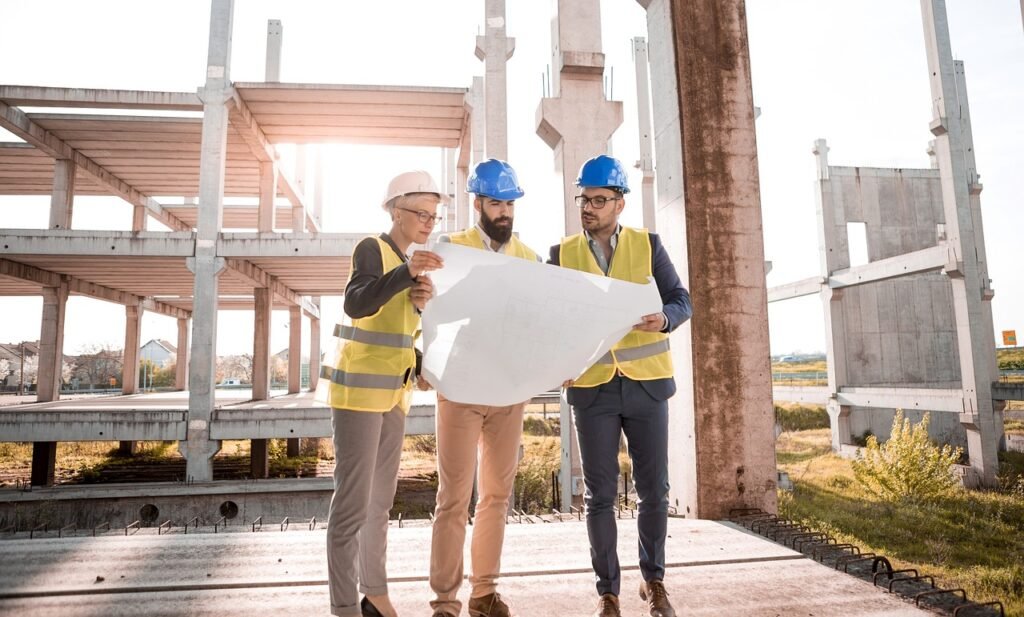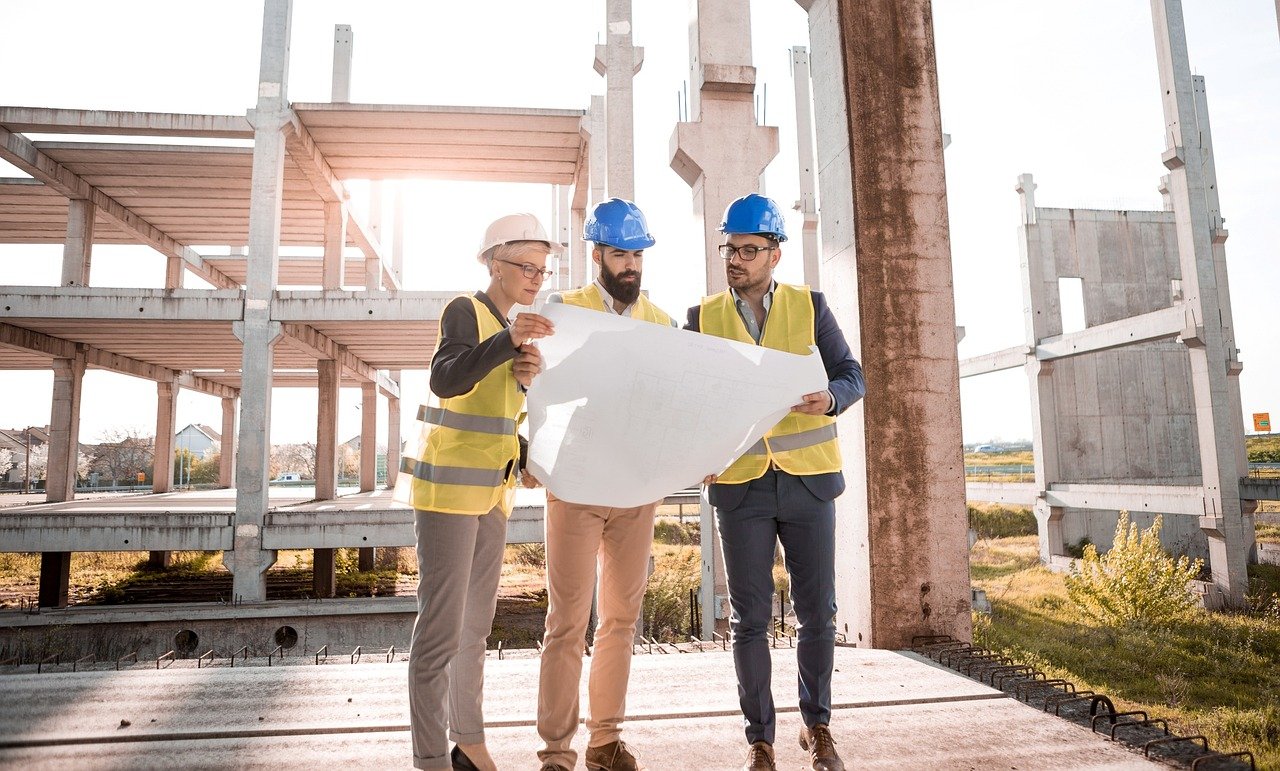Welcome to an insightful article that explores the importance of promoting sustainability through the use of safe construction materials. By utilizing eco-friendly and sustainable materials in your construction projects, you not only contribute to a healthier environment but also ensure the safety of your building occupants. Let’s delve into the benefits and impact of choosing the right materials for a greener and safer construction industry. Have you ever thought about how the materials used in construction can impact the environment and human health? In an age where sustainability and eco-friendliness are becoming increasingly important, it’s crucial to consider the materials we use in building structures. In this article, we will explore how promoting sustainability through the use of safe construction materials can benefit both the environment and the people who inhabit these buildings.

This image is property of pixabay.com.
Importance of Using Safe Construction Materials
When it comes to constructing a building, the materials used play a significant role not only in the durability and stability of the structure but also in determining its environmental impact. Using safe construction materials means choosing materials that have minimal negative effects on human health and the environment. By prioritizing the use of safe materials, you can contribute to creating healthier indoor environments and reducing your carbon footprint.
Benefits of Safe Construction Materials
Choosing safe construction materials offers a wide range of benefits, both short-term and long-term. Not only do these materials minimize environmental impact, but they also promote better indoor air quality and reduce the risk of health issues for occupants. Additionally, safe materials are often more durable and require less maintenance, leading to cost savings over the lifespan of the building.
Eco-Friendly and Sustainable Materials
In recent years, there has been a growing trend towards using eco-friendly and sustainable materials in construction. These materials are sourced from renewable resources, reduce energy consumption, and have lower carbon footprints compared to traditional materials. By incorporating eco-friendly materials into your construction projects, you can promote sustainability and contribute to a greener future.
Examples of Eco-Friendly Materials
There are numerous eco-friendly materials available for use in construction, ranging from recycled materials like reclaimed wood and metal to sustainable materials like bamboo and cork. These materials offer unique properties and aesthetic appeal while reducing the demand for virgin resources and minimizing waste. By using eco-friendly materials, you can create environmentally responsible and visually appealing structures.

This image is property of pixabay.com.
Safe Construction Material Options
When selecting safe construction materials for your projects, it is essential to consider factors such as toxicity, durability, recyclability, and energy efficiency. By choosing materials that prioritize safety and sustainability, you can create buildings that are healthier for occupants and have a lower environmental impact. Let’s explore some common safe construction material options and their benefits.
Low-VOC Paints
Volatile organic compounds (VOCs) are chemicals found in many building materials, including paints, that can off-gas harmful toxins into the air. Opting for low-VOC paints can help improve indoor air quality and reduce health risks for occupants. These paints are available in a wide range of colors and finishes, making them a safe and stylish choice for any building project.
FSC-Certified Wood
The Forest Stewardship Council (FSC) certification ensures that wood products come from responsibly managed forests that prioritize sustainability and conservation. Choosing FSC-certified wood for construction projects helps protect natural habitats, support local communities, and reduce deforestation. By using FSC-certified wood, you can create structures that are not only safe but also environmentally conscious.
Recycled Glass Countertops
Recycled glass countertops are a sustainable alternative to traditional stone countertops, made from crushed glass embedded in resin. These countertops are durable, heat-resistant, and easy to maintain, making them an eco-friendly and stylish choice for kitchens and bathrooms. By using recycled glass countertops, you can contribute to reducing waste and promoting the circular economy.
LED Lighting
LED lighting is an energy-efficient and long-lasting lighting option that can help reduce electricity consumption and lower utility costs. LED lights produce less heat, contain no mercury, and are available in various colors and designs, making them a versatile choice for residential and commercial buildings. By switching to LED lighting, you can enhance the energy efficiency of your construction projects and create a safer, more sustainable environment.
Insulating Concrete Forms (ICFs)
Insulating concrete forms (ICFs) are a sustainable building material that combines concrete and insulation into a single product. ICFs offer excellent thermal performance, soundproofing, and durability, making them an ideal choice for constructing energy-efficient and resilient buildings. By using ICFs, you can reduce energy consumption, lower heating and cooling costs, and enhance the comfort and safety of occupants.
Incorporating Safe Construction Materials into Your Projects
Now that you are familiar with the benefits and options for safe construction materials, it’s time to consider how to incorporate them into your projects effectively. By following best practices and guidelines for selecting, sourcing, and using safe materials, you can create buildings that are not only environmentally friendly but also safe and healthy for occupants.
Conduct a Material Assessment
Before starting a construction project, conduct a thorough assessment of the materials needed and evaluate their safety and sustainability. Consider factors such as toxicity, recyclability, energy efficiency, and environmental impact when selecting materials for different components of the building. By researching and comparing materials, you can make informed decisions and prioritize safety and sustainability in your projects.
Source Materials Responsibly
Choose suppliers and manufacturers that prioritize safety, sustainability, and ethical practices in the production of building materials. Look for certifications such as Cradle to Cradle, Green Seal, or Energy Star to ensure that the materials meet industry standards for safety and sustainability. By sourcing materials responsibly, you can support environmentally responsible practices and promote transparency in the supply chain.
Collaborate with Design Professionals
Collaborate with architects, engineers, and designers who have experience and expertise in using safe construction materials. Work together to incorporate eco-friendly and sustainable materials into the design and specifications of the building, ensuring that the materials chosen align with your project goals and priorities. By building a team of professionals dedicated to sustainability, you can create buildings that are not only safe but also environmentally friendly and aesthetically pleasing.
Educate Stakeholders and Occupants
Educate clients, contractors, and occupants about the importance of using safe construction materials and the benefits they offer. Provide information on the types of materials used in the building, their properties, and their environmental impact to raise awareness and promote sustainable practices. By involving stakeholders and occupants in the decision-making process, you can foster a culture of sustainability and ensure the long-term success of your projects.

This image is property of pixabay.com.
Conclusion
Promoting sustainability through the use of safe construction materials is essential for creating buildings that are not only durable and functional but also safe, healthy, and environmentally friendly. By choosing eco-friendly and sustainable materials, you can reduce your carbon footprint, improve indoor air quality, and contribute to a greener future for generations to come. Incorporating safe construction materials into your projects requires careful consideration, research, and collaboration with design professionals and stakeholders. By prioritizing safety and sustainability in your construction projects, you can make a positive impact on the environment and the well-being of those who inhabit these buildings. Remember, every step you take towards using safe construction materials is a step towards a more sustainable future.
